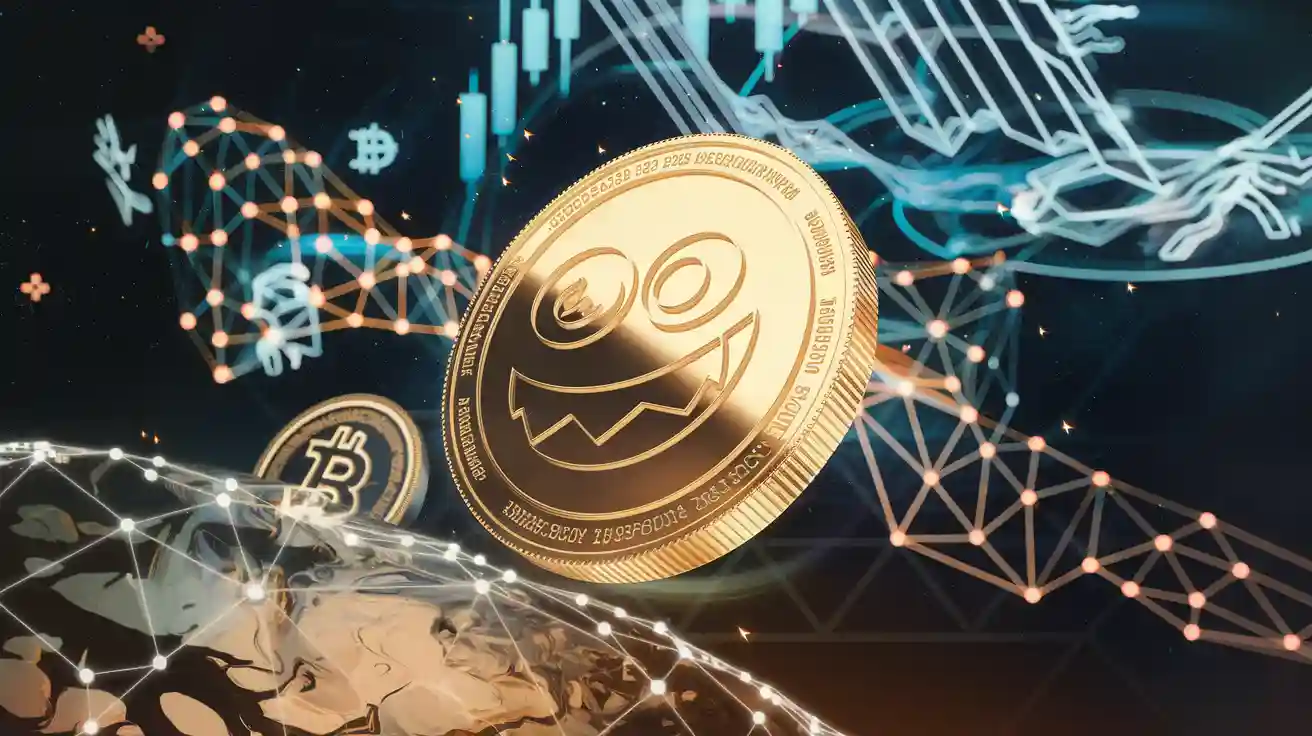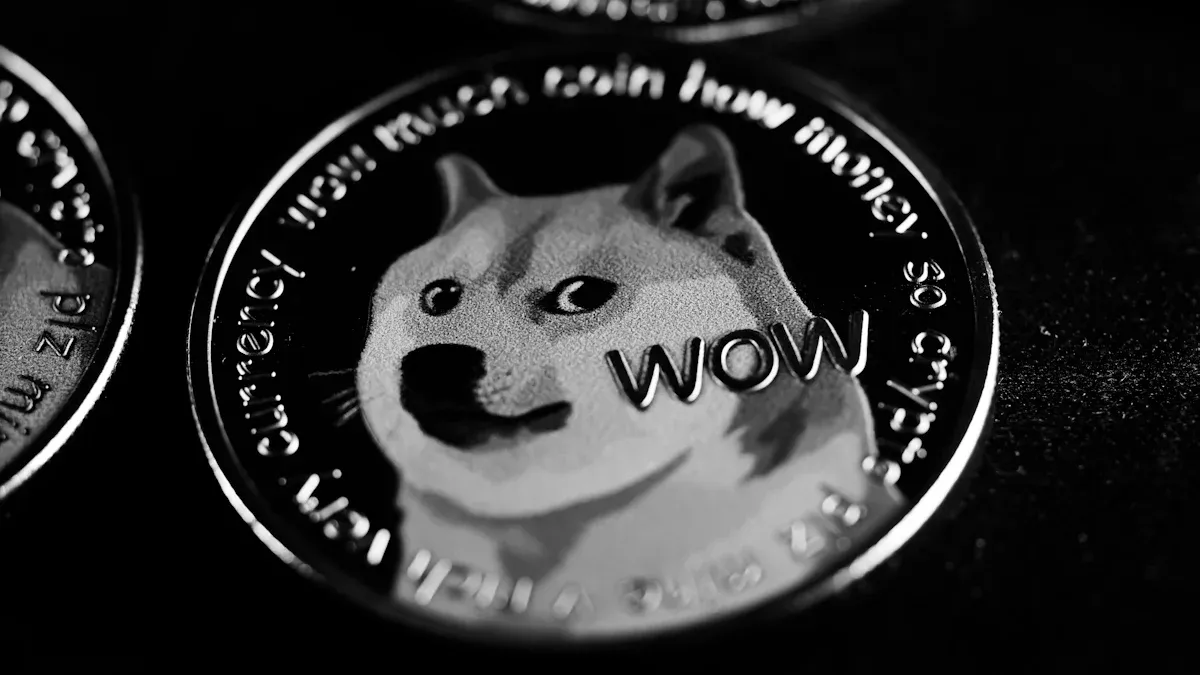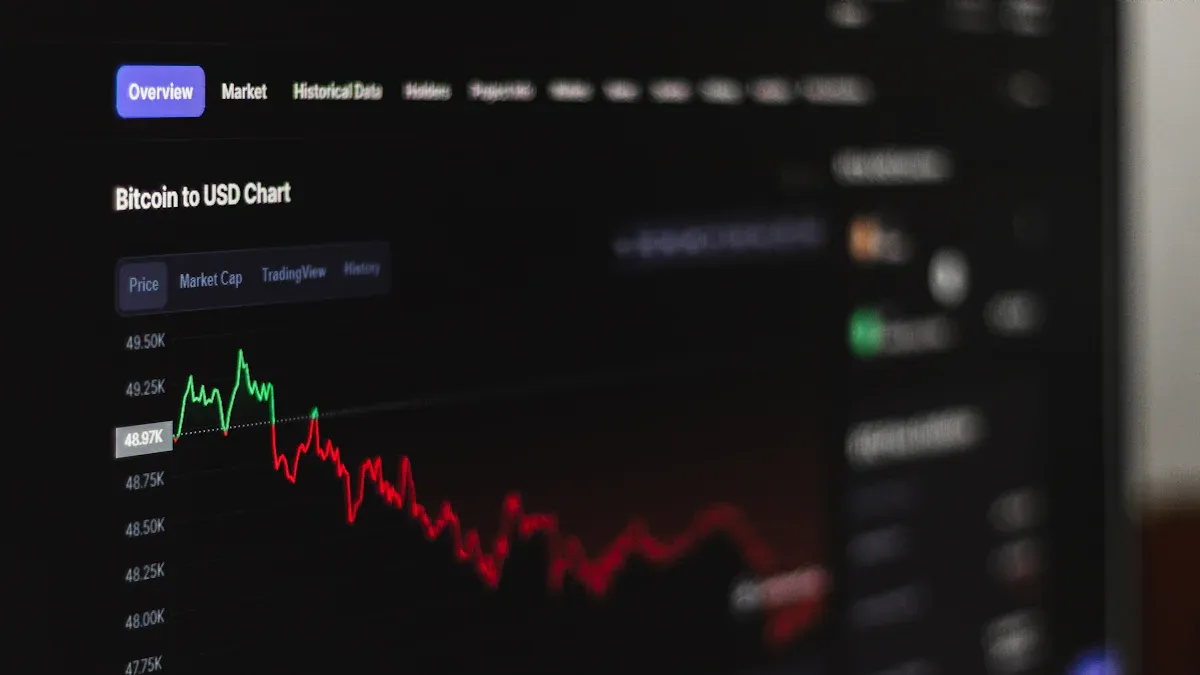Meme Coin Definition You Need to Know in 2025
2025-05-14 08:25:01
A meme coin, by definition, is a type of cryptocurrency that draws inspiration from internet memes and pop culture. These coins rely heavily on humor and community involvement, often achieving widespread attention through viral trends. In 2024, their market capitalization skyrocketed from $20 billion to $120 billion, showcasing their increasing allure among traders looking for speculative opportunities.
Key Takeaways
- Meme coins are digital money based on jokes and online trends. They are often popular because of humor and group support.
- Meme coins become successful when people share them online. Social media helps make them well-known and increases trading.
- Buying meme coins is risky since their prices change a lot. They don’t have real value, so investors must research carefully.
Meme Coin Definition and Key Characteristics

Origin and Inspiration from Memes
Meme coins find their roots in internet culture, where humor and relatability drive their creation. These cryptocurrencies often draw inspiration from viral memes, pop culture references, or trending topics. For example:
- Dogecoin, launched in 2013, was based on the popular Doge meme featuring a Shiba Inu dog. Initially created as a joke, it became a pioneer in the meme coin space.
- By October 2021, over 124 meme coins had entered the cryptocurrency market, showcasing their growing appeal.
- High-profile endorsements, such as Elon Musk's tweets in 2021-2022, propelled Dogecoin to a market cap of $62 billion, cementing its place in the cryptocurrency market.
- Meme coins have also intersected with politics. In 2024, Donald Trump's election victory sparked a resurgence in meme coins, with Fartcoin reaching a valuation of $2 billion.
- In 2025, the Central African Republic introduced a national memecoin, $CAR, which experienced a sharp decline in value shortly after its launch.
These examples highlight how meme coins often emerge from cultural phenomena, blending humor with speculative investing opportunities.
Community-Driven Nature
The success of meme coins heavily depends on their communities. Unlike traditional cryptocurrencies, which often rely on technical innovation, meme coins thrive on social engagement and collective enthusiasm. Key aspects of their community-driven nature include:
- Tokens supported by active communities tend to perform consistently in the market.
- Online communities play a significant role in shaping project decisions and marketing strategies.
- Social media platforms amplify the reach of meme coins, keeping them relevant and engaging.
- Community involvement generates excitement, driving trading volume and referrals.
A strong community not only sustains interest in meme coins but also fosters a sense of belonging among investors. This dynamic makes meme coins unique in the cryptocurrency market.
Volatility and Speculative Value
Meme coins are notorious for their volatility, which stems from their speculative nature. Prices often fluctuate dramatically, influenced by social media trends and community sentiment. For instance, projects like Zerebro, Fartcoin, and Lofi have experienced sharp price movements. These fluctuations highlight the risks associated with investing in meme coins. A decline in social media mentions or trading volume can lead to rapid drops in value, as seen in the meme coin market.
This volatility attracts risk-tolerant investors seeking quick profits but also underscores the high-risk nature of meme coins. While their speculative appeal drives their popularity, it also makes them a precarious choice for long-term investing.
How Meme Coins Work
Creation and Launch Process
Meme coin creation has become increasingly accessible due to advancements in cryptocurrency platforms. These coins, inspired by internet memes, often emphasize humor and community engagement. Platforms like Pump.fun have simplified the process, enabling users to launch meme coins with minimal technical expertise. The steps involved in meme coin creation typically include:
- Selecting a blockchain platform, such as Ethereum or Binance Smart Chain, to host the coin.
- Designing the token's name, symbol, and supply.
- Using tools or platforms to generate the smart contract code.
- Deploying the token on the blockchain and listing it on decentralized exchanges.
In 2024, approximately 6 million meme coins were launched, reflecting the growing popularity of this trend. The value of these coins often depends on social media trends and celebrity endorsements, which can cause rapid price fluctuations. This process highlights how meme coin creation has evolved into a straightforward and widely adopted practice within the cryptocurrency ecosystem.
Trading and Market Dynamics
The trading behavior of meme coins is unique and heavily influenced by market dynamics. Several factors contribute to their trading patterns:
- Whale Tracking: Large wallets often act as early indicators of sentiment shifts. Monitoring these wallets can provide insights into potential price movements.
- Social Media Engagement: Active social media accounts play a crucial role in driving visibility. Metrics like velocity scores help detect early signals of price changes.
- Liquidity Levels: Adequate liquidity is essential to prevent price manipulation. Experienced traders prefer meme coins with liquidity above $150,000.
- Fundraising Behaviors: Analyzing token supply distribution and holder patterns helps assess structural risks.
These dynamics make meme coins highly volatile and speculative. Traders often rely on real-time data and analytics to navigate the unpredictable nature of the meme coin market.
Role of Online Communities and Social Media
Online communities and social media platforms play a pivotal role in the success of meme coins. Platforms like TikTok and Twitter amplify their reach, enabling viral content to attract widespread attention. For instance, TikTok's algorithm promotes videos to large audiences, making it a powerful tool for meme coin promotion. The hashtag #memecoin garnered hundreds of millions of searches within two weeks, showcasing the immense interest in this space.
Gen Z investors, known for their tech-savviness, often drive meme coin investments based on viral trends. Community engagement fosters a sense of belonging among investors, further fueling the popularity of these coins. Social media platforms not only enhance visibility but also create a feedback loop where increased engagement leads to higher trading volumes and market activity.
Risks and Challenges of Meme Coins

Lack of Intrinsic Value
Meme coins often lack intrinsic value, which differentiates them from cryptocurrencies with real-world applications. Unlike Bitcoin or Ethereum, meme coins rarely offer utility beyond speculative trading. Their value depends on social media trends and community hype rather than tangible use cases. This absence of intrinsic value contributes to their reputation as risky assets. Meme coins also reinforce negative perceptions of the cryptocurrency market, with critics arguing that they undermine the credibility of serious projects. As a result, investors face significant uncertainty when considering meme coin investments.
High Volatility and Market Manipulation
The meme coin market is notorious for its extreme volatility. Prices can skyrocket within hours, only to plummet just as quickly. Grok Meme Coin exemplifies this volatility, experiencing a 13,000% surge followed by a 50% drop. Such fluctuations attract speculators but deter long-term investors. Market manipulation further exacerbates these risks. Pump-and-dump schemes, where prices are artificially inflated before being sold off, are common in the meme coin space. Santiment's analysis highlights how retail speculation drives hype, often leading to market corrections. Increased social volume and trending phrases like "alt season" signal potential greed phases, making meme coins a precarious choice for investing.
Regulatory Concerns and Scams
Regulatory uncertainty poses significant challenges for meme coins. The SEC has stated that meme coins are not classified as securities, leaving them outside the scope of traditional oversight. This lack of regulation creates opportunities for scams and fraudulent activities. Commissioner Crenshaw has emphasized the need for regulatory assessments to address the speculative intent of meme coin purchasers. Private litigation trends also reveal growing concerns about investor protection. Claims of unregistered securities sales and securities fraud highlight the risks associated with meme coin investments. Additionally, 53% of listed cryptocurrencies failed in 2024 and 2025, with macroeconomic conditions contributing to these high failure rates. These factors underscore the importance of caution when navigating the meme coin market.
Meme coins have redefined the cryptocurrency landscape by blending internet culture with speculative investing. Their community-driven nature and viral appeal make them unique, yet their lack of intrinsic value and high volatility pose significant risks. As the memecoin market evolves, its future will likely depend on regulatory developments and sustained community engagement.
FAQ
What makes meme coins different from traditional cryptocurrencies?
Meme coins rely on internet culture and community hype. Traditional cryptocurrencies focus on utility and innovation, offering real-world applications like smart contracts or decentralized finance.
Are meme coins a good investment for beginners?
Meme coins carry high risks due to volatility and lack of intrinsic value. Beginners should research thoroughly and consider safer options before investing in speculative assets.
How can investors identify scams in the meme coin market?
Tip: Look for red flags like unrealistic promises, anonymous teams, and pump-and-dump schemes. Verify token contracts and community legitimacy before investing.